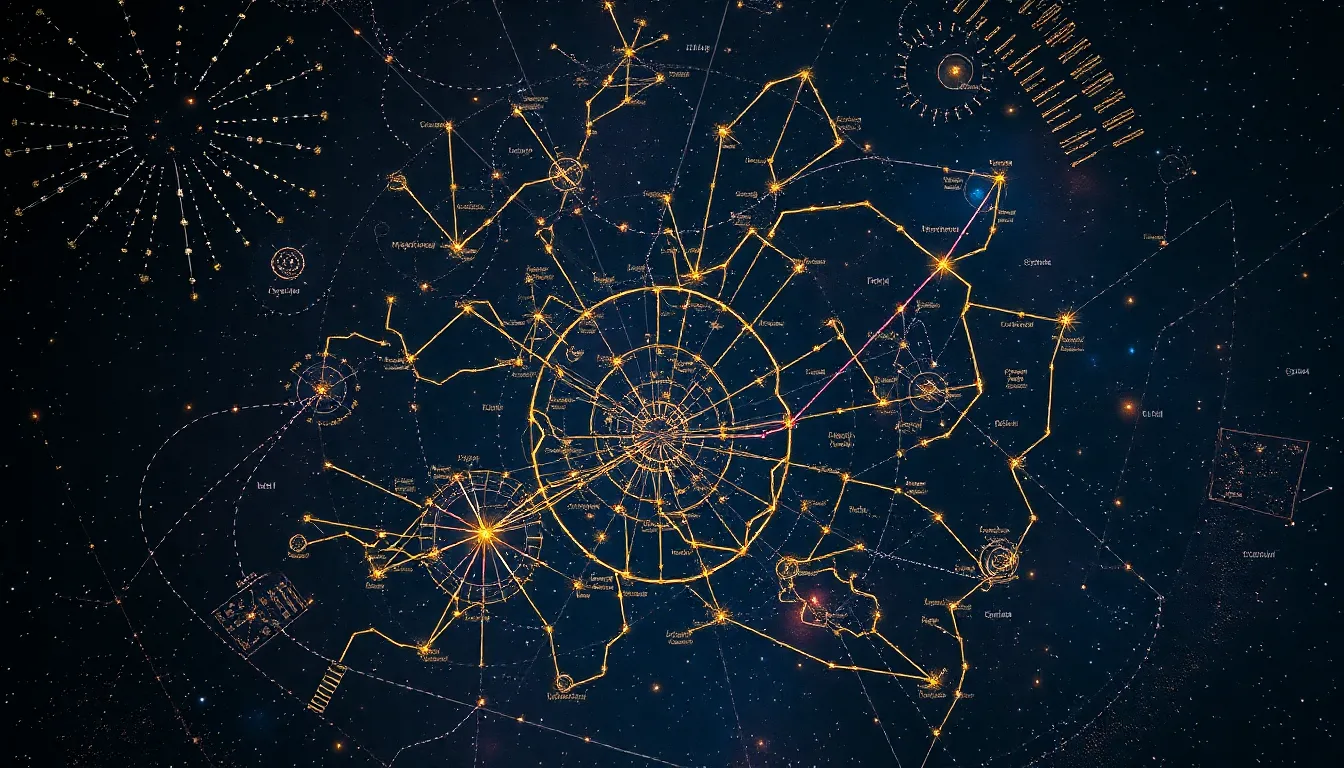The Mythical Map of the Cosmos: Uncovering Constellation Stories
I. Introduction
Constellations are defined as groups of stars that form recognizable patterns in the night sky. These celestial formations have captured the imagination of humanity for millennia, serving not only as guides for navigation but also as a canvas for storytelling. In various cultures, constellations have played a significant role in mythology, folklore, and even agriculture, revealing the interconnectedness of human experience and the cosmos. This article aims to explore the mythical stories behind constellations, shedding light on their historical origins, cultural significance, and contemporary relevance.
II. Historical Overview of Constellations
The practice of mapping constellations can be traced back to ancient civilizations, where early astronomers observed the night sky and assigned meanings to the patterns they saw.
- Origins of constellation mapping: The Babylonians were among the first to catalog constellations around 2000 BCE, creating lists that included many of the constellations we recognize today.
- The role of astronomy: In ancient societies, astronomy was crucial for agricultural planning, timekeeping, and navigation. Constellations served as seasonal indicators, guiding planting and harvesting cycles.
- Evolution of names and classifications: Over time, Greek and Roman cultures adopted and adapted these early constellations, leading to the nomenclature that is still in use today.
III. The Cultural Significance of Constellations
Constellations are not merely astronomical phenomena; they are deeply woven into the fabric of cultural identity.
- Mythology and folklore: Many constellations derive their names from mythological figures, such as Orion, the great hunter, or Cassiopeia, the vain queen.
- Influence on navigation and agriculture: Sailors relied on stars for navigation, while farmers observed constellations to determine the best times for planting and harvesting.
- Reflection of societal values: The stories of constellations often mirror the values, beliefs, and concerns of the cultures that created them, providing insights into human nature.
IV. Major Constellations and Their Myths
Several constellations stand out due to their rich mythological backgrounds and intriguing stories.
- Orion: Known as the Hunter, Orion’s adventures include battles with beasts and his pursuit of the Pleiades. His story is celebrated in many cultures, symbolizing strength and resilience.
- Ursa Major and Ursa Minor: The Great Bear and Little Bear represent a mother and her child in various myths. Their stories often revolve around themes of protection and guidance.
- Cassiopeia: The Queen sits on her celestial throne, forever punished for her vanity. Her story serves as a cautionary tale about pride and humility.
V. The Zodiac Constellations: Astrological Connections
The zodiac signs, a subset of constellations, hold significant astrological importance.
- Overview of the twelve zodiac signs: Each sign corresponds to a specific time of year and is associated with unique personality traits.
- Mythological origins: The twelve zodiac constellations each have their own myths; for example, Aries is linked to the tale of the Golden Fleece.
- Astrological significance: In astrology, the positions of these constellations at the time of one’s birth are believed to influence personality and destiny.
VI. Indigenous and Local Constellation Stories
Different cultures have their own unique interpretations of the night sky, often reflecting their environment and experiences.
- Aboriginal Australian star lore: Indigenous Australians have rich traditions of storytelling connected to the stars, using constellations to explain natural phenomena and cultural beliefs.
- Native American constellations: Many tribes have distinct constellations that are integral to their myths, such as the Seven Sisters, which represent the Pleiades.
- African and Pacific Islander narratives: From the Maasai’s tales of the Southern Cross to Polynesian navigators’ use of stars for sea travel, these stories emphasize the importance of constellations in daily life.
VII. Scientific Perspectives on Constellations
Understanding constellations from a scientific viewpoint reveals a distinction between myth and reality.
- Constellations vs. actual star clusters: While constellations appear as cohesive patterns, the stars within them can be vastly different distances from Earth.
- Impact of modern astronomy: Advances in telescopes and technology have deepened our understanding of the universe, sometimes eclipsing ancient myths.
- Future of constellation studies: As our knowledge grows, there is an opportunity to merge scientific and cultural narratives, preserving the stories while expanding our understanding of the cosmos.
VIII. The Role of Literature and Art in Depicting Constellation Myths
Constellations have inspired countless works of literature and art throughout history.
- Notable literary works: From ancient epics to modern novels, constellations often serve as metaphors for human experience, reflecting dreams and aspirations.
- Artistic representations: Artists have depicted constellations in various forms, from classical paintings to contemporary installations, highlighting their beauty and mystery.
- Intersection of science and art: The blending of astronomical science and artistic expression allows for a deeper understanding of the universe and our place within it.
IX. Contemporary Interpretations and Relevance of Constellation Stories
In today’s digital age, interest in constellations and astrology is experiencing a resurgence.
- Resurgence of interest: Many people are turning to astrology for guidance and self-reflection, seeking connections to ancient wisdom.
- Modern technology: Apps and software have made it easier for individuals to explore the night sky, bringing constellations back into cultural consciousness.
- Preservation of stories: There is a growing movement to document and share constellation stories, ensuring they are passed on to future generations.
X. Conclusion
Constellations serve as a bridge between the realms of science and mythology, reflecting humanity’s eternal quest for meaning in the cosmos. Their stories, rich with cultural significance, offer insights into our values, fears, and aspirations. As we continue to explore the night sky, it is essential to preserve these narratives, ensuring that future generations can marvel at the myths woven into the fabric of the universe.



